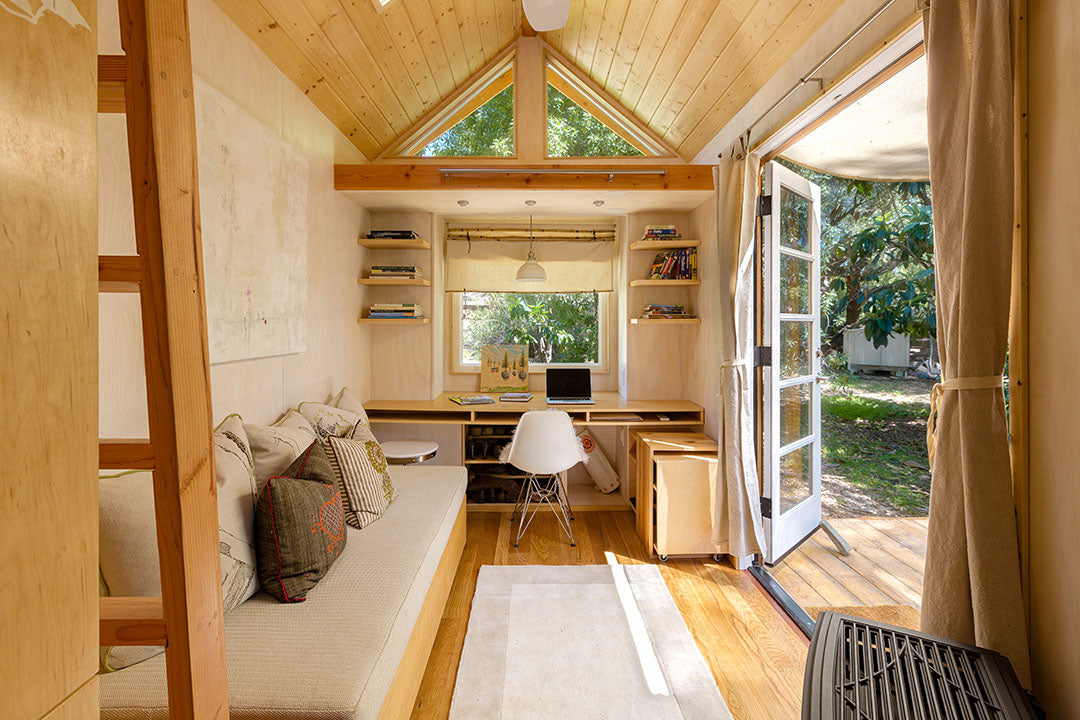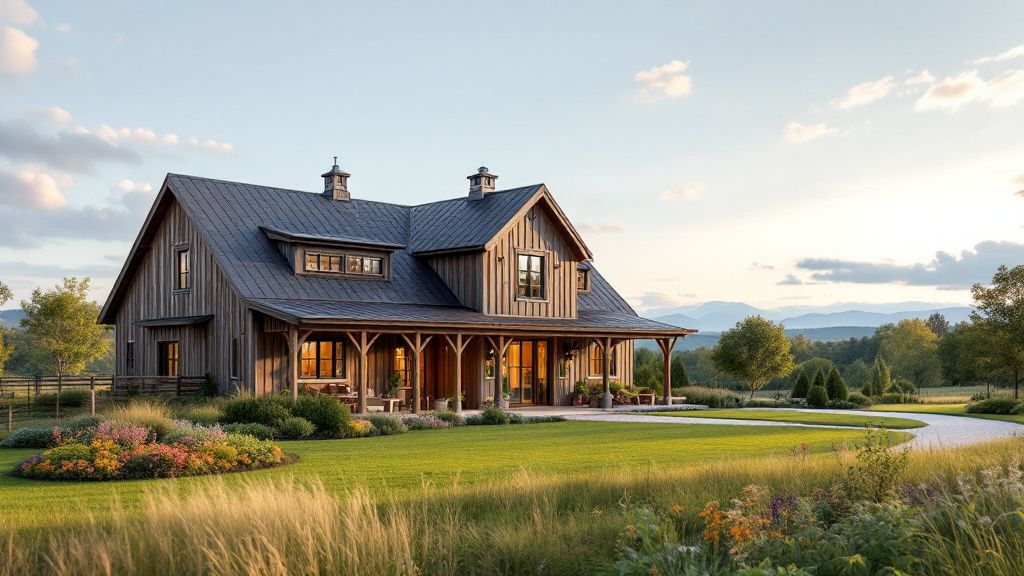Save money and reduce your carbon footprint with these eco-friendly tips when building your own tiny home. There are so many reasons why people all over the country are joining the tiny home community, and it’s pretty neat to see all the different designs people are coming up with. People are primarily choosing to ditch the stereotypical American Dream because they want to create an alternative lifestyle & home that works for them. Often this is inclusive of the desire to live a more sustainable and low-impact life. Living in a tiny home allows people to cull all the unnecessary stuff they’ve collected over the years. They can reduce their carbon footprint and save money!
If you’re eager to roll up your sleeves and build your own tiny home, don’t forget to keep these eco-friendly tips in mind!

Sol Haus Tiny House plans
Use recycled and reclaimed building materials
Before the building can begin, you need to consider your material needs and options. You don't have to go all brand-new or spend lots of money on pricey doors and windows. Consider using recycled countertops, reclaimed wood, used appliances, and so much more. We recommend hitting up reused building supply stores, salvage auctions, Craigslist & Facebook Marketplace, flea markets, and even yard sales to find treasures from critical items like flooring to decor. Consistent treasure hunting is best for finding the best scores. Keep in mind, that the sizes of some recycled items, like windows, might mean you need to adjust measurements in your tiny house plans. You can go all-in on recycling with a used shipping container or an old school bus to convert into a dwelling too!
Find alternative sources of energy
Part of why people are selling their homes or leaving rental housing behind in favor of tiny home living is because they want to lower their monthly expenses. Reducing or eliminating your recurring energy costs is a great way to do that. You can invest in solar panels and a battery system, which is a pricey upfront cost, but it will pay off in the long run because you're making your own energy. By reducing your power consumption needs in your tiny home, with low-energy appliances and high-quality insulation, you can go with a smaller & less expensive solar system. Over time, if your needs grow, you can add on.
Opt for healthier, nontoxic building materials
You may pay a little more than standard options by choosing nontoxic materials. However, you'll have peace of mind in knowing that your indoor home environment is healthier. These are better for the environment too!Look for eco-friendly building materials in these categories: insulation, flooring, paint, caulk, walls, etc.
Add plants to the decor
When you use plants to liven up your space, you're not just adding color to your home; you're cleaning the air because the plants use carbon dioxide to live. Did you know they're also great for reducing stress? You can cultivate your own decor, as well as herbs and vegetables, which is excellent for reducing your grocery bill while striving for sustainability. We strongly recommend talking to someone at a nursery and asking for recommendations for plants that do well where you live, whether from small-town Nebraska to San Antonio, TX, or beyond.

Compost your waste
It's not unusual to find composting toilets in tiny homes because that's one less thing you have to worry about. These toilets take your waste and break it down into usable compost – if done right, it doesn't smell! When you combine the broken-down natural waste with food scraps, you can use that nutrient-rich compost to fertilize your plants and garden. However, you need to follow safety guidelines closely.
An Eco-friendly Tiny Home
Living in a tiny home isn't going to be everyone's cup of tea, but for those who embrace the lifestyle, it's liberating! And it feels good knowing that it's one of the most sustainable kinds of housing. Maximize the benefits with our eco-friendly tips.






Share: